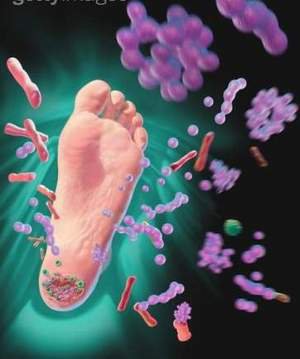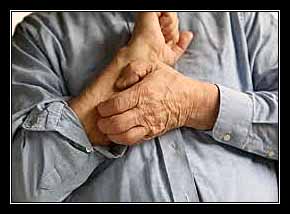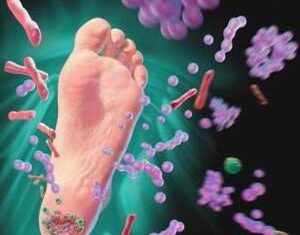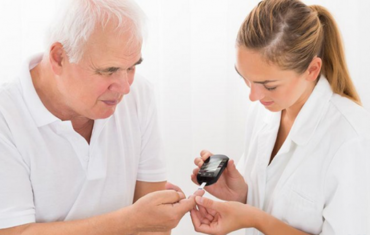01 January 2017
Gout: Causes, diagnosis and treatment
Nội dung
Overview of Gout (gout)
What is gout?
Gout (gout), also known as gout, is a disorder of the metabolism of purines in the kidneys, making the kidneys unable to filter uric acid from the blood. Uric acid is usually harmless and is formed in the body, then excreted in the urine and feces. In people with gout, the amount of uric acid in the blood accumulates over time. When this concentration is too high, small crystals of uric acid are formed. These crystals gather in the joints and cause inflammation, swelling, and pain in the patient.
Gout is characterized by recurrent attacks of acute arthritis, often experiencing sudden pain in the middle of the night and red and swollen joints when exacerbations occur, especially those in the big toe, but can also be affects other joints in the legs (such as knees, ankles, feet) and less commonly the joints (hands, wrists, elbows), even the spine can be affected.
Is gout dangerous?
Although gout can cause stress, pain and insomnia, gout is a benign disease and can be controlled with medication as well as preventing exacerbations by changing the diet.
Based on the severity, gout is divided into 3 stages:
- Stage 1: The level of uric acid in the blood has increased but gout symptoms are not present. Usually, patients only notice the first symptoms of gout after kidney stones.
- Stage 2: The uric acid concentration is very high at this time, leading to the formation of crystals appearing on the toes (tophi). Tophi usually manifests slowly, decades after the first gout attack, but sometimes even earlier. Once present, it is easy to increase in number and volume and can cause ulcers. Tophi is usually found on the cartilage of the ear and then the elbow, big toe, heel, instep and tendon of the heel.
During this stage, the patient will feel joint pain, but the pain will not last long. After a while, the patient will experience other symptoms of gout with increasing intensity and frequency.
- Stage 3: the symptoms of the disease will not go away and uric acid crystals will attack many joints.
Most people with gout are only stage 1 or 2, and very rare have progression to stage 3 because the gout symptoms have been properly treated in stage 2.
Causes of Gout (gout)
Causes of gout include two main causes: primary (most cases) and secondary
Primary:
95% of cases occur in men, the common age is 30-60 years old.
Unknow cause.
Diets containing foods high in purines such as liver, kidney, shrimp, crab, egg yolks, mushrooms … are considered to aggravate the disease.
Secondary
Due to genetic disorders (genetic causes): rare.
Due to increased uric acid production or decreased uric acid excretion or both:
- Renal failure and other diseases that decrease glomerular uric acid clearance
- Blood diseases: acute leukemia
- Use diuretics such as furosemid, thiazide, acetazolamide, …
- Use of cytostatics for the treatment of malignancies
- Use anti-TB drugs such as ethambutol, pyrazinamide, …
Symptoms of Gout (gout)
Gout symptoms often come on suddenly and at night. In some cases, gout has no early signs. Gout symptoms often appear when the patient has had acute or chronic gout.
The main symptoms of the disease include:
- Sudden, intense, swollen joints
- Joints hurt more to the touch
- Swollen red joints
- The area around the joint warms
Most gout symptoms usually last a few hours for 1–2 days. However, for severe cases, the pain can occur within a few weeks.
If a person with gout does not take gout medicines often, the symptoms will get worse.
- Tophi: this disease is characterized by an accumulation of crystals under the skin. Usually, these blocks will appear around the toes, knees, fingers, and ears. If not handled properly the tophi u will get bigger and bigger.
- Joint damage: if the patient does not take gout medication, the joint can be permanently damaged. This increases the risk of damage to bones and other joints.
- Kidney stones: if gout is not treated properly, uric acid crystals not only accumulate around joints, but also accumulate in the kidneys, causing kidney stones.
Subjects at risk for gout (gout)
The incidence of gout is about 1/200 of adults. The disease can affect everyone, regardless of age and gender. However, men 30–50 years old and women in the postmenopausal period more often. The disease rarely occurs in young people and children.
Risk factors for disease include:
- Diet too much protein and seafood
- Age and gender: the disease appears more in men and the elderly
- Drink lots of beer for a long time
- Fat
- There was someone in the family who had gout
- Recently injured or recently operated
- Excessive weight gain
- Hypertension
- Abnormal kidney function
- Using certain drugs can cause uric acid accumulation in the body such as: Aspirin, Diuretics, Chemotherapy drugs, Medications that can weaken the immune system such as cyclosporine
- History of diseases such as diabetes, impaired kidney function, heart disease, atherosclerosis, clogged blood vessels, infectious diseases, hypertension
- Dehydration
Prevention of gout (gout)
Habits to help limit the progression of gout:
- Follow your doctor’s instructions, do not take any non-prescribed medications or quit prescription medications.
- Follow-up visit on time to be monitored on disease progress as well as health status.
- Good treatment for secondary gout diseases such as kidney failure, metabolic diseases, …
- Exercise every day
- Maintain a reasonable weight
In particular, it is necessary to maintain a reasonable diet:
- Avoid eating offal, especially liver, sardines
- Avoid seafood and red meat
- Eat less saturated fat and low fat products
- Eat more fiber-rich foods such as cucumbers, cassava roots, tomatoes, …
- Replace refined sugars with natural sugars found in vegetables and whole grains
- Drink plenty of water: drink 2.5–3 liters of water per day
- Reduce the use of alcoholic beverages, especially alcohol
- Do not drink coffee, tea or carbonated drinks
Diagnostic measures for gout (gout)
Gout is often difficult to accurately diagnose because the symptoms closely resemble other diseases.
The applied diagnostic measures include:
- Ask your medical history
- Clinical examination
- Laboratory testing:
A blood test to measure the concentration of uric acid in the blood
Aspiration joint fluid to find crystals of uric acid
Joint x-ray
Ultrasound of the joints
Joint CT scanner
Implementing the quadrants
One of the following standards may apply:
Bennet and Wood standards (1968): most widely applied in Vietnam due to their ease of remembering and lack of assay conditions (sensitivity 70%, specificity 82.7%)
Sodium urate crystals are found in synovial fluid or in tophi.
Or at least 2 of the following:
- History or present of at least 2 episodes of painful swelling in a joint with sudden onset, intense pain, and complete resolution within 2 weeks.
- History or present of big toe joint pain swelling with sudden onset, severe pain, and completely resolves within 2 weeks.
- There are tophi notes
- Have or are responding well to colchicine (reduce inflammation, relieve pain in 48 hours).
Standards of ILAR and Omeract (2000): sensitivity 70%, specificity 78.8%
There are urate crystals in synovial fluid, and / or:
Characteristic urate crystals in tophi are found chemically or polarized microscopy, and / or by:
There are 6 out of 12 manifestations of the following clinical, laboratory, and radiographs:
- Inflammation develops at its maximum within a day
- There was more than one episode of acute arthritis
- Arthritis in a joint
- Redness of the joint area
- Swelling, pain in the toe joints I
- Arthritis of the toe I on one side
- Unilateral ankle arthritis
- Visible tophi
- Hyperuricemia (men ≥ 420 mmol / l, women ≥ 360 mmol / l)
- Swelling asymmetrical joint pain
- Cyst under the bone, no bone defect on radiograph
- The cultures were negative
Treatment measures for gout (gout)
Principles of gout treatment
- Treatment of arthritis during an acute gout attack.
- Prophylaxis of gout recurrence, tissue urate deposition and complications through treatment of hyperuricemia syndrome with the goal of controlling blood uric acid below 360 mmol / l (60 mg / l) with gout without tophi and less than 320 mmol / l (50 mg / l) with tophi gout.
Specific treatment
Diet – activities for people with gout:
- Avoid substances high in purines such as animal organs, meat, fish, shrimp, crab, … You can eat eggs, fruit. Eat meat no more than 150 grams per day.
- Do not drink alcohol, need to lose weight, exercise regularly.
- Drink plenty of water, about 2-4 liters of water per day
- Avoid drugs that increase blood uric acid, avoid factors that trigger gout attacks such as stress, injury, …
Internally medical treatment
Anti-inflammatory drugs: used during the gout attack to reduce inflammation- Drugs to reduce blood uric acid: used in the chronic period to avoid relapse of acute gout attacks
Surgical treatment:
Tophi is indicated in the following cases:
- Gout with ulcer complications
- Tophi nodular superinfection
- Large tophi, affecting movement or for aesthetic reasons
When surgery, colchicine should be used to avoid the onset of acute gout attacks and the combination of blood uric acid-lowering drugs.
(Source: Vinmec)
Danh mục
Tin nổi bật
20 April 2021
07 April 2021












